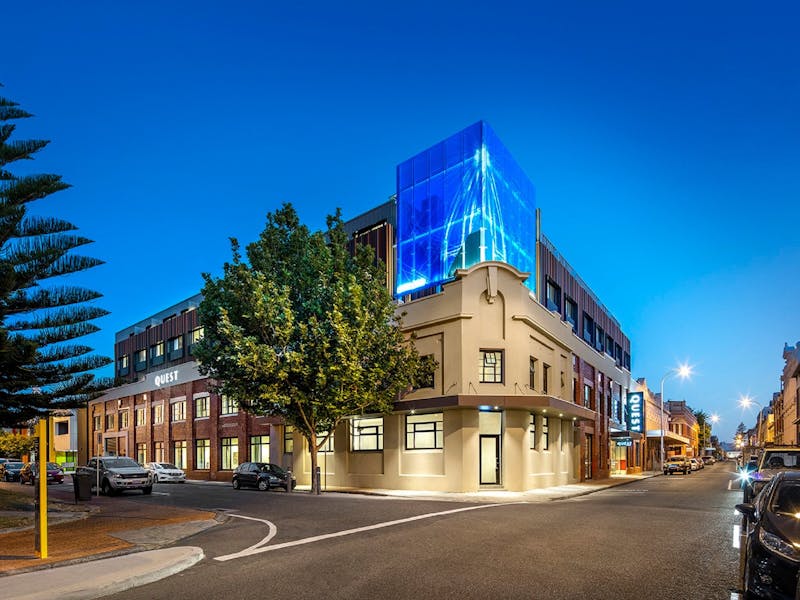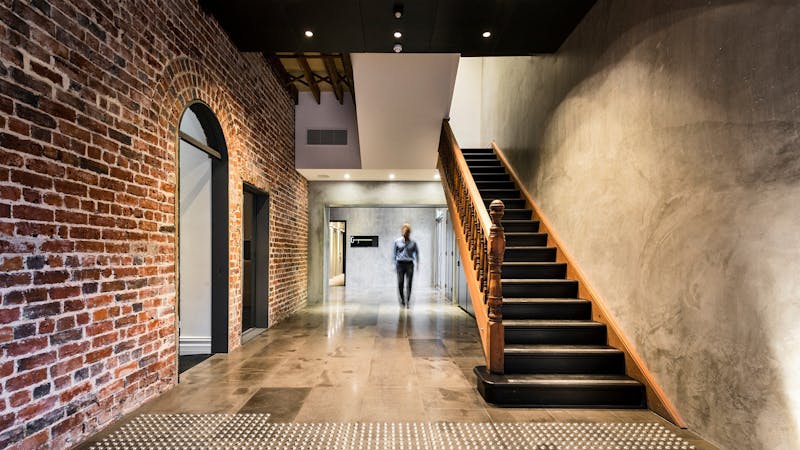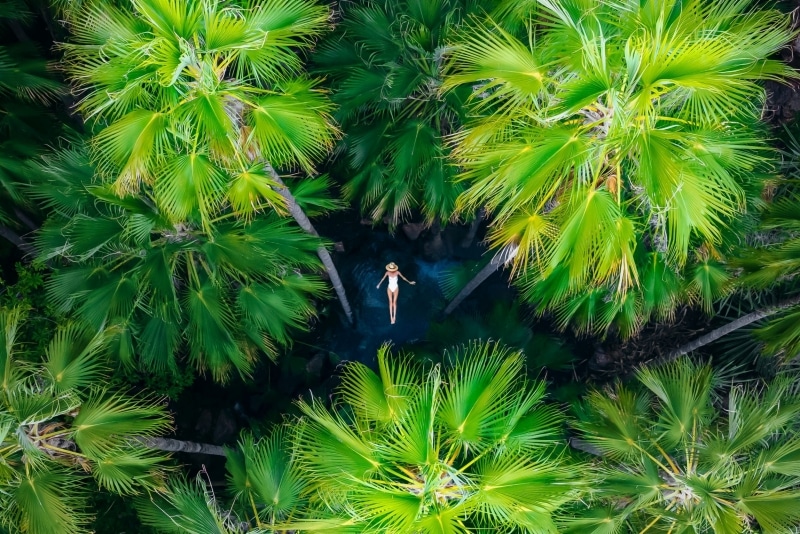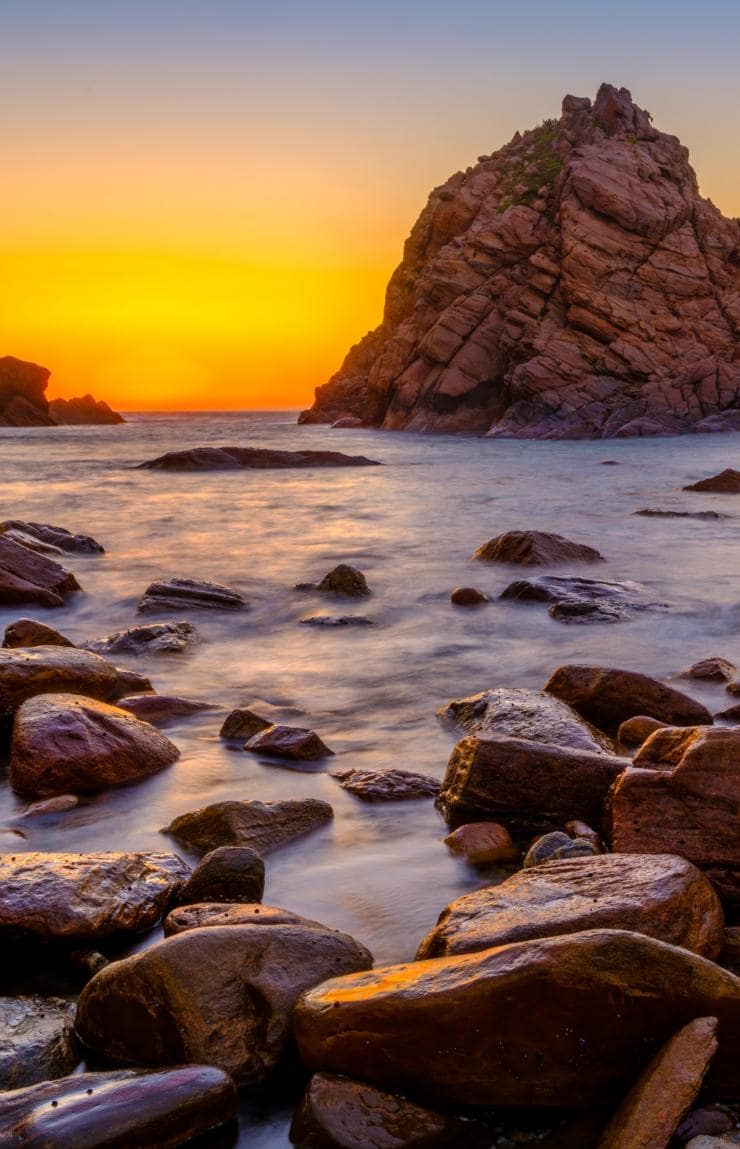Guide to Rottnest Island
Aboriginal name: Wadjemup (pronounced Wad-jem-up)
When it’s time to relax and recharge, swap the rush of the city for an idyllic escape on Rottnest Island.
Located just 19km (12mi) off the coast of Perth, Rottnest Island’s tranquil setting will make you feel a world away. Rotto, as the locals call it, is a protected nature reserve boasting an abundance of unique flora and fauna, including spectacular marine life and the island’s most famous resident – the adorable quokka. Discover rich cultural heritage, explore white-sand beaches and swim and snorkel in pristine waters, all in this little pocket of paradise.
Top things to do on Rottnest Island
Spend the day beach-hopping
Boasting 63 beaches and 20 bays, Rottnest Island is a beach-lovers’ paradise. Whether you want to dive and snorkel, swim and surf, or relax and recharge, you’ll be spoilt for choice with pure white sand beaches and clear blue waters at every turn.
Get a quokka snap
The quokka is as curious and friendly as it is cute, so it’s very likely they’ll come up to you! Have your camera ready but be respectful and keep a safe distance so they feel comfortable enough to let you capture this special encounter.
Go whale watching
From September to November, humpback whales migrate along the coastline and spend time around Rottnest Island’s protected waters. Go whale watching with Rottnest Fast Ferries and their marine biologist to learn about these beautiful beings.
Explore underwater
With its remarkable limestone reef, diverse marine life and several iconic dive sites including underwater caves, the waters around Rottnest Island are a diver’s paradise. Join Bucket List Diver and discover the wonders that lie below.
Cruise in style on a private charter
Nothing beats a day spent sailing on a private yacht. Whether it’s relaxation or adventure you’re after, Boutique Cruise will individually tailor a charter experience to your preference. There’s even a barbecue on board, just BYO drinks and food!
Segway around the island
Glide around on a Segway and explore the island’s beauty and history in a fun and eco-friendly way. Segway Tours WA takes you on an adventurous tour where you’ll discover Rottnest’s fascinating history while soaking up its stunning surrounds.
Go glass bottom kayaking
One of the best ways to experience the island’s crystal-clear waters is by kayak. Sea Kayak Rottnest’s glass bottom kayaks give you a window into the water below where you’ll spot all kinds of colourful coral and marine life.
Get an Aboriginal perspective
Known as Wadjemup in the local Aboriginal language, Rottnest Island holds a special significance for the local Noongar people. Explore its unique meaning, culture and history from the perspective of your Noongar guide on an immersive walking tour.
Jump out of a plane
Gather your courage and experience the ultimate thrill of skydiving! Witness unbeatable birds-eye views of the island, ocean and coastline on your exciting freefall then celebrate with a glass of bubbles on the beach afterwards.
Go glamping on the beach
Spend a night amongst the dunes of famous Pinky Beach, falling asleep to the sound of waves lapping on the shore. Discovery Rottnest Island’s eco-luxe tents thoughtfully blend nature with creature comforts to offer a unique resort experience.
Enjoy seafood and sundowners
Toast your day of island adventures with an ice-cold beverage and fresh seafood platter while watching the sunset over Thomson Bay. Hotel Rottnest’s huge outdoor deck is the perfect place to be when you want great food, cold drinks and perfect views.
Start planning

Esplanade Hotel Fremantle by Rydges
Hotels, Resorts • Swimming Pool • 4 1/2 Stars
Accommodation
From AU$190 to AU$500

Pier 21 Apartment
Apartments • Swimming Pool • 4 Stars
Accommodation
From AU$175 to AU$803

Discovery Resorts - Rottnest Island
Caravan, Camping and Holiday Parks, Resorts • Swimming Pool
Accommodation
From AU$269 to AU$2499

Quest Apartments Fremantle
Apartments, Hotels • Gym
Accommodation
From AU$230 to AU$490

The National Hotel
Hotels • Bar
Accommodation
From AU$200 to AU$550

Quest Fremantle
Apartments • Gym
Accommodation
From AU$170 to AU$210

Warders Hotel
Hotels
Accommodation
From AU$299 to AU$1299

Samphire Rottnest
Hotels • Swimming Pool
Accommodation
From AU$250 to AU$1500

Nautica Residences by Seashells - Fremantle
Apartments • Bar
Accommodation
From AU$259 to AU$450

The Hougoumont Hotel
Hotels • Gym
Accommodation
From AU$218 to AU$549























































































































































